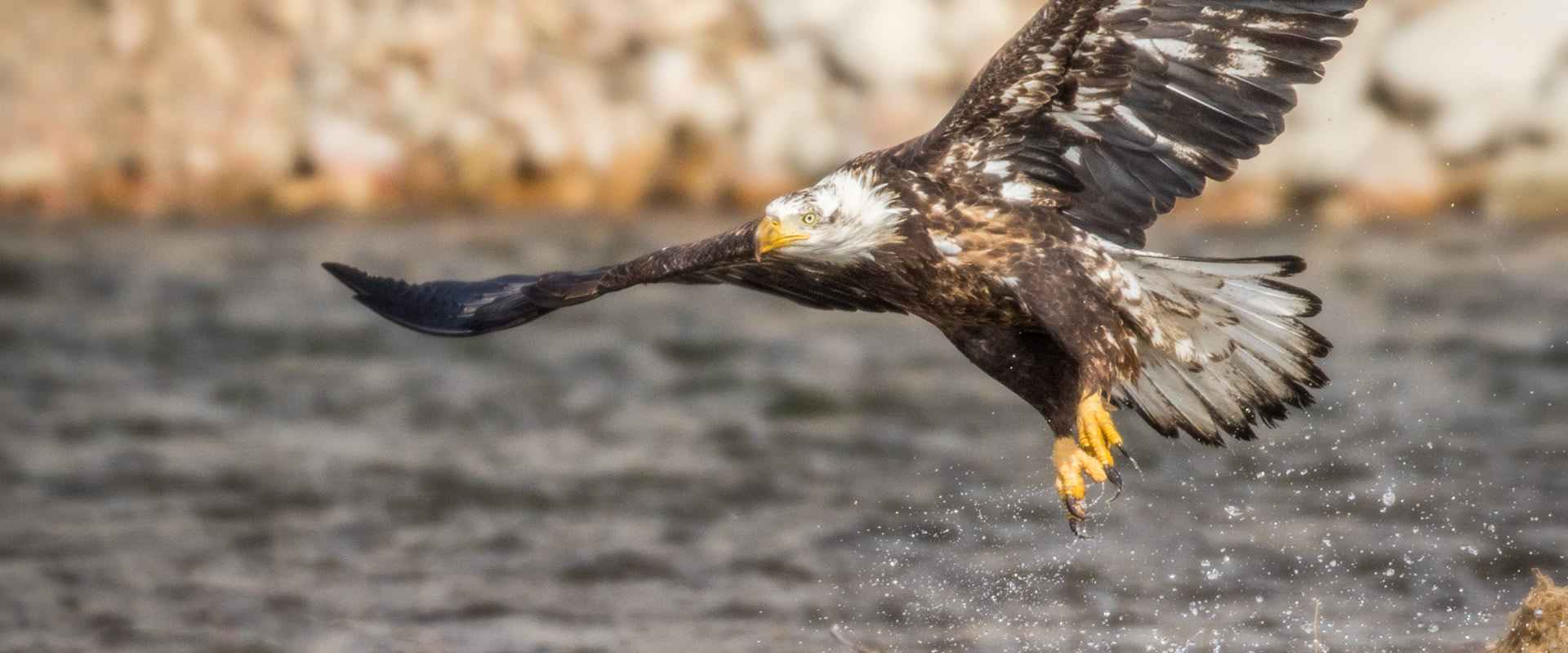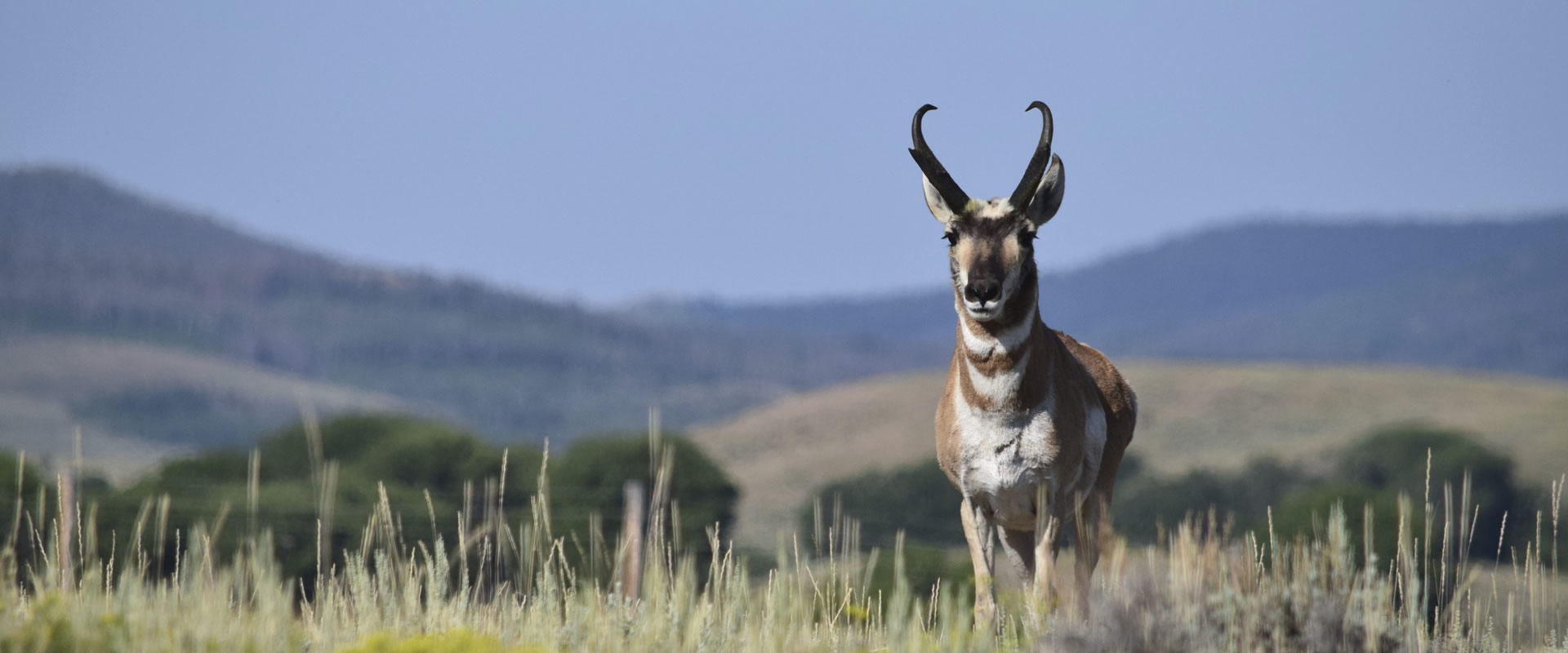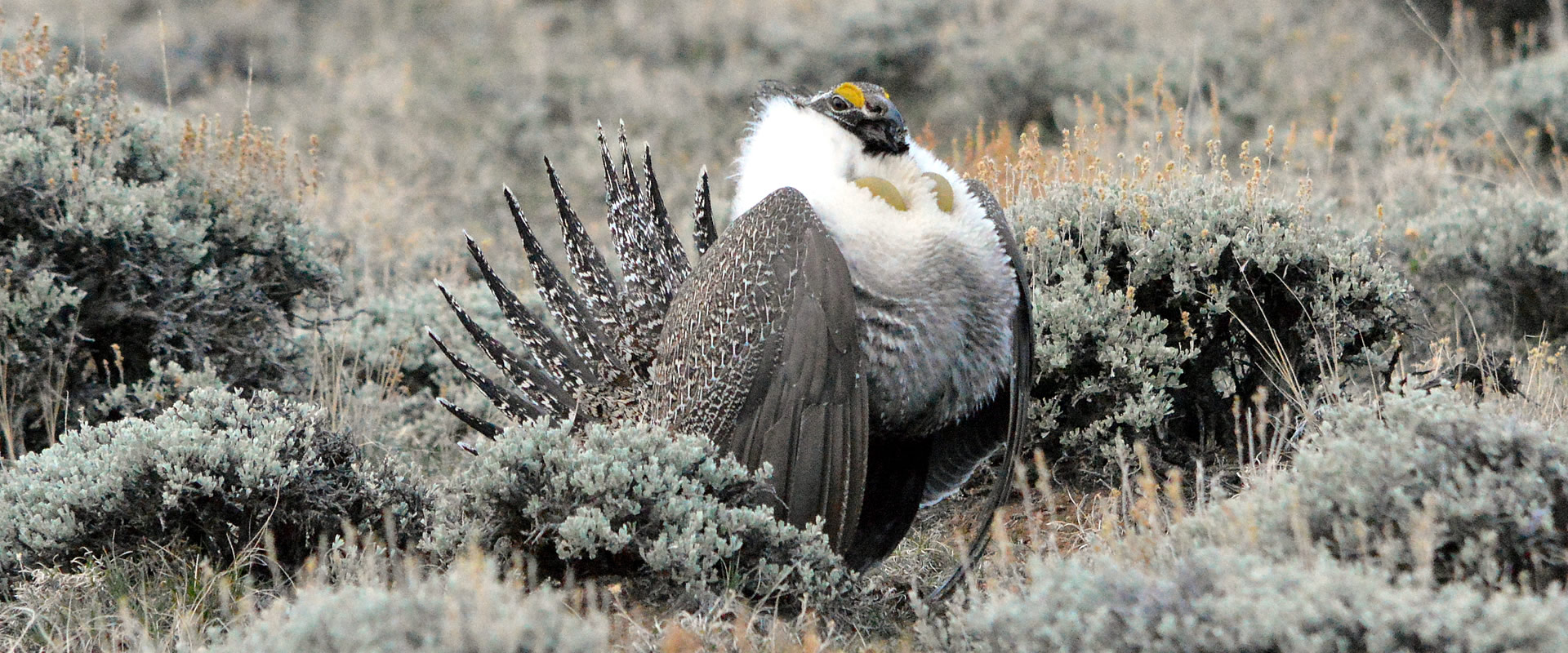The Sierra Madres and the Snowy Range both offer fantastic wildlife viewing.
The Medicine Bow National Forest's vast natural areas have numerous trails for hikers, cross country skiing and snowmobiling. While you can see lots of wildlife from our scenic drives one of the best ways to spot wildlife is from the trails systems. Rafting and boating is another fun way to get off the beaten path to the places were wildlife frequent.
As you travel through Carbon County these are some of the amazing wildlife you might be lucky enough to spot!
Rocky Mountain Elk
Elk large members of the deer family known for their impressive antlers (in males). Fall and spring are the best times of year to view elk. In the spring you might be lucky enough to see a baby calf while in the fall is mating season (also called the rut) which results in some exciting and bold male behavior as they compete for mates.
Black Bear
Black Bears are relatively abundant in Carbon County and always a treat to see. They’re largely secretive animals, spending their time in forests. Male black bears can weigh up to 315 pounds, while females can reach about 200.
Bighorn Sheep
The Rocky Mountain Bighorn Sheep are the largest wild sheep inhabiting North America. Male sheep or rams are known for their large curled horns.
Moose
Moose are always a favorite animal to spot with their unique lumbering appearance they are surprisingly powerful and agile. You will generally spot them in marshy riparian areas and can easily be differentiated from elk due to their larger size and dewlaps that both sexes possess.
Mule Deer
These wonderful deer can be spotted in various terrain including brushy areas, forests, grasslands and sage. Their large ears earned them the name mule deer and are a distinctive characteristic of the species.
Bald Eagle
The Bald eagle is regularly observed in it's preferred habitat of wooded riparian areas and near large bodies of water. Their nests can be over 8 feet in width.
Mountain Lion
The solitary mountain lion, also known as cougars, are elusive and charismatic felines. Their preferred habitat are rocky brushy areas with steep slopes and mountains. Their tracks are up to 3.5 inches long!
Foxes
Red & Grey foxes can be found around Carbon County although the Red fox is the most common. These delightful predators prey on small animals and also feed on carrion, berries and plants.
Golden Eagle
Golden Eagles are one of the largest birds of prey in North America. They can be found near cliffs or steep hills. They hunt by flying over large open spaces and then swooping down snatch to their prey. Food sources include rabbit, mole, squirrel and other small animals.
Pronghorn
Pronghorn are copious in Carbon County. They are known for their amazing speeds reaching up to 60 miles per hour! A speed only second to the cheetah. Both male and female pronghorns have horns which they shed each year. Pronghorn prefer open grasslands and sage brush plains for their habitat.
Marmot
These plucky little fellows have a lot to say and you can hear there distinctive call or whistle as they communication. They are best located in high elevations and rocky fields. These herbivores feed on grasses, forbs and seeds.
Western Meadow Lark
The Western Meadow Lark is the official bird of Wyoming. This lovely little songbirds are easily recognized by their striking yellow bellies and throats and distinctive black "V" on the breast.
The American Badger
Often seen hunting in prairie dog towns this nocturnal predator has a large body with short legs and a white and black striped face.
Sage Grouse
Carbon County has plenty of ideal habitat for the plucky sage grouse. Many people enjoy visiting sage grouse leks in the spring where they strut and inflate their gular sacs to put on quite a show for females during mating season.
Wild Horses
Wild horses have always been symbols of the West, living examples of a wide-open landscape and an untamed frontier spirit. Current herds are descendants of Spanish horses released in the 1500's.








